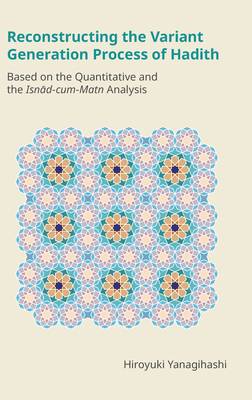
- Afhalen na 1 uur in een winkel met voorraad
- Gratis thuislevering in België vanaf € 30
- Ruim aanbod met 7 miljoen producten
- Afhalen na 1 uur in een winkel met voorraad
- Gratis thuislevering in België vanaf € 30
- Ruim aanbod met 7 miljoen producten
Zoeken
Reconstructing the Variant Generation Process of Hadith
Based on the Quantitative and the Isnād-Cum-Matn Analysis
Hiroyuki Yanagihashi
€ 161,45
+ 322 punten
Omschrijving
This monograph is dedicated to the analysis of hadiths for the purpose of reconstructing the process of variant generation. Medieval authors seemingly did not devote many pages to the question of textual variation, certainly because they had little interest in the question of how individual hadiths were historically formed. Several contemporary researchers have shown interest in the issue of textual variation in hadith. They agree that many hadiths were reformulated since their initial circulation and aim to trace the process of reformulation with regard to individual hadiths. Methodologically, the most successful is the isnād-cum-matn analysis proposed by Harald Motzki and Gregor Schoeler. This method consists of determining whether a correlation lies between the transmission process of a hadith, obtained from the analysis of isnāds (chains of transmission), and its textual development, obtained from the examination of its matn (text), sometimes complemented by biographical sources. However, despite the existence of many excellent studies based on this method, presenting the general pattern of variant generation with accuracy is far from being achieved. This study, which contains four chapters, seeks to precisely reconstruct the process of variant generation by analyzing isnāds from various quantitative perspectives, in addition to using the isnād-cum- matn analysis.
Specificaties
Betrokkenen
- Auteur(s):
- Uitgeverij:
Inhoud
- Aantal bladzijden:
- 224
- Taal:
- Engels
- Reeks:
Eigenschappen
- Productcode (EAN):
- 9781800502178
- Verschijningsdatum:
- 15/04/2023
- Uitvoering:
- Hardcover
- Formaat:
- Genaaid
- Afmetingen:
- 156 mm x 234 mm
- Gewicht:
- 603 g

Alleen bij Standaard Boekhandel
+ 322 punten op je klantenkaart van Standaard Boekhandel
Beoordelingen
We publiceren alleen reviews die voldoen aan de voorwaarden voor reviews. Bekijk onze voorwaarden voor reviews.








